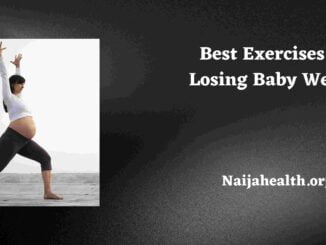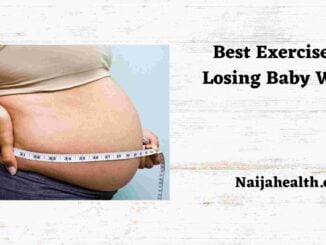
Exercises to Do When Bloated
Bloating is a common digestive problem that many people experience at some point in their lives. It refers to a feeling of fullness, tightness, or tightness in the abdomen. Bloating can be uncomfortable and can make your belly bigger than usual. Although usually a temporary condition, recurrent or chronic bloating can have a significant impact on quality of life.
The causes of bloating can vary and may include:
- Gas accumulation
Gas that builds up in the digestive system, mainly the stomach and intestines, can lead to bloating. This can be due to ingestion of air, certain foods that produce gas during digestion, or the fermentation of indigestible foods by gut bacteria.
- Eat too much
Consuming large amounts of food in a short time can overload the digestive system, leading to bloating and discomfort.
- Food intolerances
Some people may be intolerant to certain foods, such as lactose or gluten, which can cause bloating due to poor digestion.
- Digestive disorders
Conditions like irritable bowel syndrome (IBS), inflammatory bowel disease (IBD), and celiac disease can contribute to chronic bloating.
- Hormonal changes
Hormonal fluctuations, especially in women during menstruation or menopause, can cause fluid retention and bloating.
- Slow digestion
If the movement of food through the digestive tract is slow, it can lead to bloating and discomfort.
10 Exercises to do When Bloated
When you feel bloated, incorporating certain exercises into your routine can help ease discomfort and support digestive health.
Here are ten exercises that can be beneficial when you feel bloated:
- Deep belly breathing
- Lie on your back, place one hand on your chest and the other on your stomach.
- Breathe slowly and deeply, focusing on expanding your abdomen while keeping your chest relatively still.
- This exercise promotes relaxation, stimulates digestion, and helps reduce bloating.
- Walking
- Take a brisk walk for 15 to 30 minutes.
- Walking encourages gentle movement in the digestive system, which can help reduce bloating and aid in digestion.
- Cat-cow pose
- Start on all fours with your hands under your shoulders and your knees under your hips.
- Inhale as you lift your tailbone, arch your back, and lower your belly (Cow Pose).
- Exhale as you draw your tailbone in, around the spine, and bring your chin toward your chest (Cat Pose).
- Repeat this soft motion for several breaths to massage the abdominal organs and improve digestion.
- Rotate the person sitting
- Sit on the floor with your legs stretched out in front of you.
- Bend your right knee and place your right foot on the outside of your left thigh.
- Inhale, lengthen the spine and twist to the right, placing the left elbow outside the right knee.
- Hold the pose for a few breaths, then repeat on the other side.
- The twisting position can help release trapped gas and reduce bloating.
- Child’s pose
- Kneel on the floor and sit on your heels.
- Lower your body forward, resting your forehead on the floor, and bring your arms out in front of or along your body.
- Take a deep breath and relax with this gentle stretch, which can help reduce bloating and abdominal discomfort.
- Bridge pose
- Lie on your back, knees bent and feet hip-width apart.
- Press your feet into the ground, lift your hips, and lift your butt off the floor.
- Hold the pose for a few breaths, focusing on your core and expanding the abdominal area.
- Wind-Relieving Poss
- Lie on your back and bring your knees to your chest.
- Squeeze your knees with your arms and shake gently from side to side.
- This pose can help stimulate the digestive system and release trapped gas.
- Standing forward bend
- Stand with your feet hip-width apart.
- Exhale as you lean forward from your hips, letting your upper body hang over your legs.
- Grab your elbows and relax in this forward bend, which can aid digestion and reduce bloating.
- Supine twist
- Lie on your back with knees bent and feet flat on the floor.
- Extend your arms to the sides at shoulder height.
- Lower both knees to the side, keep your shoulders on the ground, and hold the pose for a few breaths.
- Repeat on the other side. This gentle twist can aid digestion and reduce bloating.
- Pelvic tilt
- Lie on your back with knees bent and feet flat on the floor.
- Inhale and as you exhale, focus on your core and tilt your pelvis upward, pressing your lower back into the floor.
- Hold the position for a few seconds, then release.
- Repeat this movement a few times, helping to massage the abdomen and stimulate digestion.
Importance of Exercise for Bloating
Exercise plays an important role in controlling bloating and promoting digestive health.
Here are some key reasons why exercise is important for reducing bloating:
- Stimulating movement in the digestive system
Physical activity helps stimulate the muscles of the digestive tract, promoting the movement of food through the digestive system. This movement, known as peristalsis, facilitates efficient digestion and waste removal, reducing the risk of bloating.
- Improves blood circulation
Exercise increases blood flow throughout the body, including the digestive organs. Better circulation means better delivery of oxygen and nutrients to the organs involved in digestion, optimizing their function and reducing bloating.
- Release trapped gas
Certain exercise, such as twists or gentle movements that compress and release the abdomen, can help release trapped gas and ease discomfort caused by bloating. The movements and stretches involved in the exercise promote the expulsion of gas from the digestive system.
- Stress relief
Regular exercise has been shown to reduce stress levels, which can positively impact digestive health. Stress and anxiety can contribute to bloating and other digestive problems. Therefore, exercise that promotes relaxation and the release of endorphins can help alleviate these symptoms.
- Weight control support
Maintaining a healthy weight through regular physical activity can reduce the risk of bloating. Excess weight, especially around the abdomen, can put pressure on the digestive organs and disrupt their normal functioning, leading to bloating. Exercise helps control weight, keeping the digestive system functioning optimally.
- Improves overall digestive function
Regular exercise can improve overall digestive function by improving muscle tone in the abdominal area, increasing nutrient absorption efficiency, and regulating bowel movements. These factors contribute to a healthier digestive system and can reduce the occurrence of bloating.
FAQs
Is it safe to exercise when im bloated?
Yes, it’s generally safe to exercise when you’re bloated. However, it’s important to choose gentle exercises and listen to your body. If you experience pain or discomfort while exercising, you should stop and consult a healthcare professional.
Can exercise make bloating worse?
High-intensity or vigorous exercise can worsen bloating in some people. It’s best to choose low-impact exercises and avoid activities that put undue pressure on the abdominal area. If you find that constant exercise makes your bloating worse, you should see a medical professional for further evaluation.
When is the best time to exercise if I am prone to bloating?
There is no single answer to this question. Some people find it helpful to exercise in the morning before a big meal, while others prefer to exercise after a digestive period. Experiment with different times and listen to your body to determine what works best for you.
Can some exercises specifically target bloating?
While there are no exercises that target only bloating, certain exercises can help relieve symptoms of bloating by promoting digestion, releasing gas, and relieving abdominal tension. These exercises include deep abdominal breathing, gentle twists, stretching exercises, and low-impact cardiovascular activities like walking.
How long do I need to exercise to reduce bloating?
The amount of exercise needed to relieve bloating varies between individuals. Participating in at least 20 to 30 minutes of exercise, such as brisk walking or a targeted exercise routine, can help boost digestion and reduce pain. However, shorter exercise sessions may even be beneficial. Listen to your body and adjust the duration based on your comfort level and general physical condition.
Are there any dietary recommendations combined with exercise to reduce bloating?
Along with exercise, maintaining a balanced diet can help reduce bloating. Consider avoiding foods known to cause bloating, such as carbonated beverages, foods high in sodium, and certain gas-producing foods like beans and cruciferous vegetables. Stay hydrated, eat smaller, more frequent meals and incorporate fiber-rich foods to support healthy digestion.
Conclusion
Bloating is a common digestive problem that can be uncomfortable and affect your overall health. However, incorporating exercise into your routine can be a useful strategy for controlling bloating and supporting digestive health.
Exercise plays an important role in stimulating the digestive system, improving circulation, reducing bloating, and reducing stress, all of which help reduce bloating. By engaging in gentle exercises like deep belly breathing, walking, yoga poses, and stretching, you can aid digestion, ease discomfort, and promote a healthier abdomen.
It is important to note that the effects of exercise can vary from person to person and it is essential to listen to your body and choose exercises that feel comfortable and appropriate for your condition. . If you have any underlying health conditions or concerns, you should consult a medical professional before starting a new exercise routine.



Be the first to comment